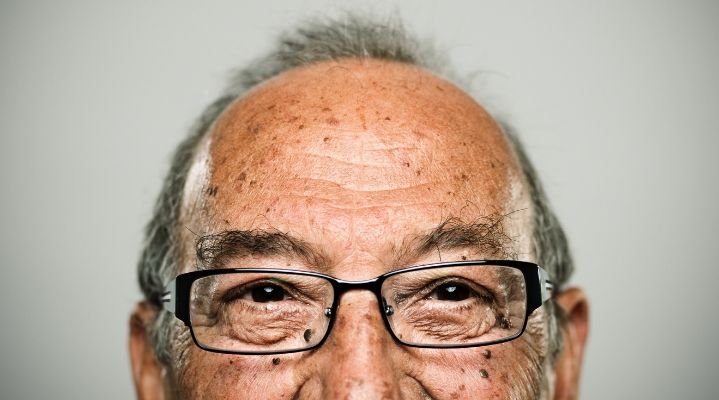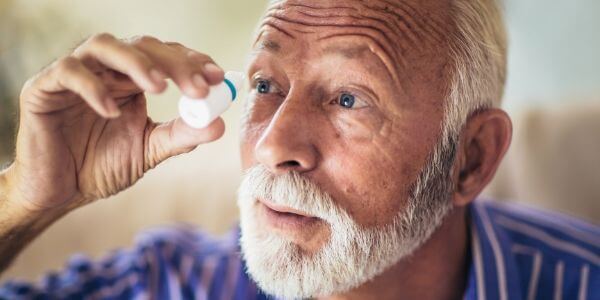Blepharoplasty: everything you need to know about eyelid surgery

Eyelid surgery, also known as a blepharoplasty, is a common cosmetic surgical procedure that can improve the appearance of drooping or sagging eyelids. It can also relieve any issues caused by excess skin around the eyes.
It’s a relatively simple and minor procedure, but many people are understandably nervous about having surgery near their eyes.
Specialising in all aspects of cosmetic and reconstructive eye surgery, Mr Daniel Ezra is perfectly placed to explain everything you need to know about having a blepharoplasty.
In this article, he explains how the procedure can benefit you, what it involves and what you can expect during recovery.
Why do some people need or want eyelid surgery?
As we age, the skin around our eyes and eyelids can become droopy or saggy. This causes eye bags or hooded, heavy eyes. Some people also have pockets of excess fat around their eyes that can lead to the same tired looking, droopy eyelids.
Excess skin around the eyes can also be caused by long term allergies or infections stretching the skin, or by smoking or being exposed to the sun for long periods of time.
Sometimes, this excess skin can be heavy, making it difficult to open the eyes, which can affect the vision. Other times, some people simply don’t like the look of their droopy eyelids.
Either way, surgery to remove excess skin or fat from the eyelids, called a blepharoplasty, can help, either medically, cosmetically, or both.
What kind of anaesthetic is used during eyelid surgery?
A blepharoplasty can be carried out under a local anaesthetic alongside a sedation. This means that your eyelids will be numbed and although you’ll be awake, you’ll feel relaxed and drowsy.
It can also be carried out under a general anaesthetic where you’re asleep for the whole procedure.
You’ll be able to discuss your options, your preferences and your surgeon’s preferences with your surgeon at your pre-operative assessment. Most of the time, you’ll be able to return home on the same day as your surgery.
What does eyelid surgery involve?
Depending on whether you’re having upper eyelid surgery, lower eyelid surgery or both, a blepharoplasty involves your surgeon removing the excess tissue that is making your eyelids appear heavy, tired or droopy.
What is upper eyelid surgery?
An upper blepharoplasty is carried out on the upper eyelids to help improve the tone and tightness of the skin between the eyebrows and the upper eyelashes. It will help to minimise excess skin that can cause the upper lids to appear heavy and creased.
Your surgeon will make an incision in the skin of the upper eyelid where the skin naturally creases, to minimise scarring.
They will then remove the excess tissue that is causing the heavy eyelids (this can be fat, muscle or excess skin) before closing the incision using small stitches. These stitches are designed to dissolve or fall out over the weeks following surgery.
Upper eyelid surgery usually takes around an hour.
What is lower eyelid surgery?
A lower blepharoplasty is carried out on the lower eyelids to help correct loose, drooping skin and eye bags between the lower eyelashes and the tops of the cheeks. It can also help to correct darker, crepey skin and puffiness under the eyes.
With lower lid surgery, your surgeon will make an incision either just inside the lower lid or just below the lower lash line.
Then they will remove the loose, crepey skin and fatty tissue that is causing the lower eyelids to droop and appear heavy.
You may then have dissolvable stitches or suture strips to close the incision. If you have suture strips, these will be removed by your surgical team around a week later.
Lower eyelid surgery usually takes longer than surgery to the upper eyelid and can take up to two hours.
What is the recovery time after eyelid surgery?
After surgery, you will be given pain relief medications to use once the anaesthetic wears off, and you may have eye pads on for a short while to help minimise bruising.
Your eye area, depending on whether you’ve had upper eyelid surgery, lower eyelid surgery or both, will feel tender, swollen and bruised in the days after surgery. Your eyes may also feel dry.
You will be given full instructions to follow on how to clean and care for your eyes in the weeks that follow surgery. Your surgeon may also give you antibiotic cream to use to help prevent an infection developing while your wounds heal.
The swelling and bruising will normally settle down after a week, but it may take up to six months for the full benefits of eyelid surgery to be noticeable.
You will normally need around a week off work and normal duties to recover from eyelid surgery. You should also refrain from driving for a few days or for as long as your surgeon has recommended.
Tips for eyelid surgery recovery
The following tips will help you recover successfully:
- When resting, use more pillows than normal to keep your head in an upright position to help minimise swelling
- Use a cold pack on your eyes, if your surgeon has said this is advisable
- Wear wraparound sunglasses when outside to avoid irritation from strong sunlight, winds, dust or dirt
- Take paracetamol or ibuprofen to help with any pain
- Follow the advice of your surgeon on cleaning your eyes and what ointments and/or drops to use
- Avoid wearing contact lenses, swimming, doing anything that might cause you to sweat, and avoid smoking for at least a week or for as long as your surgeon has recommended
Side effects to watch out for
It’s completely normal for your eyes to feel swollen and bruised for a week or so after eyelid surgery. Your wounds may even bleed a little.
Potential risks of eyelid surgery include:
- Swelling of the eyeball
- Dry eyes
- Numb eyes
- Watery eyes
- Difficulty closing your eyes
- A feeling of grittiness in the eyes
- Temporary, slightly blurred vision
If you have any of the following problems, then seek medical attention from your medical team:
- Severe eye pain
- Any signs of infection including:
- Oozing
- Severe bleeding or swelling
- The area around the eye feels hot to the touch
- Blurred vision that is getting worse
- Double vision
More information
- Our Ophthalmology Department is fully equipped with the most up to date, sophisticated equipment and specialist staff, make an enquiry online











